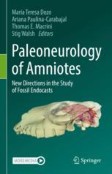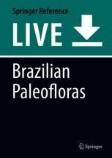Search
Search Results
-
Morphological disparity and structural performance of the dromaeosaurid skull informs ecology and evolutionary history
Non-avialan theropod dinosaurs had diverse ecologies and varied skull morphologies. Previous studies of theropod cranial morphology mostly focused on...

-
Functional space analyses reveal the function and evolution of the most bizarre theropod manual unguals
Maniraptoran dinosaurs include the ancestors of birds, and most used their hands for gras** and in flight, but early-branching maniraptorans had...

-
Low morphological disparity and decelerated rate of limb size evolution close to the origin of birds
The origin of birds from theropod dinosaurs involves many changes in musculoskeletal anatomy and epidermal structures, including multiple instances...

-
Exceptionally simple, rapidly replaced teeth in sauropod dinosaurs demonstrate a novel evolutionary strategy for herbivory in Late Jurassic ecosystems
BackgroundDinosaurs dominated terrestrial environments for over 100 million years due in part to innovative feeding strategies. Although a range of...

-
Fascinating Natural and Biological Traits of Birds
The natural history of birds is summarized. Account of what contemporary birds are, when and how they came to be what they are, and why and how they...
-
Anatomy and Evolution of Avian Brain and Senses: What Endocasts Can Tell Us
Brain morphology has become a key element to predict a wide array of cognitive and behavioral, sensory and motor abilities, and to determine...
-
Skeleton and Skeletal Muscles
The avian skeleton and skeletal muscles have been modified by natural selection over millions of years to meet the demands of flight. Some birds have...
-
Palaeocolour: A History and State of the Art
Colour plays a key role in the ecology of living birds and has undoubtedly been important throughout their evolutionary history. Colour patterns...
-
A juvenile bird with possible crown-group affinities from a dinosaur-rich Cretaceous ecosystem in North America
BackgroundLiving birds comprise the most speciose and anatomically diverse clade of flying vertebrates, but their poor early fossil record and the...

-
The Origin of Birds: Current Consensus, Controversy, and the Occurrence of Feathers
Research in the late 1900s has established that birds are theropod dinosaurs, with the discovery of feather preservation in non-avian theropods being...
-
The relationship between sternum variation and mode of locomotion in birds
BackgroundThe origin of powered avian flight was a locomotor innovation that expanded the ecological potential of maniraptoran dinosaurs, leading to...

-
Ultramicrostructural reductions in teeth: implications for dietary transition from non-avian dinosaurs to birds
BackgroundTooth morphology within theropod dinosaurs has been extensively investigated and shows high disparity throughout the Cretaceous. Changes or...

-
Avian Locomotion: Flying, Running, Walking, Climbing, Swimming, and Diving
Most birds can fly, but can also, to varying degrees depending on the species and their habitats, walk, run, climb, swim, and dive. With a focus on...
-
High morphological disparity in a bizarre Paleocene fauna of predatory freshwater reptiles
BackgroundThe consequences of the K-Pg mass extinction are reflected across present biodiversity, but many faunas that appeared immediately after the...

-
Avian Reproduction: Post-hatching Parental Care and Brood Parasitism
After eggs hatch, the extent to which adult birds care for young exhibits considerable variation, ranging from no care to extensive care lasting...
-
Avian Reproduction: Nests and Nest Sites
With few exceptions, birds lay their eggs in nests and the young of many species spend variable amounts of time in nests before fledging. After...
-
Energy Balance and Thermoregulation
Birds are endotherms and maintain their body temperatures with heat produced by cell metabolism. The energy consumed at rest, or the basal metabolic...
-
The Ecology of Browsing and Grazing in Other Vertebrate Taxa
Since the publication of the “The Ecology of Browsing and Grazing” (Gordon and Prins, The ecology of browsing and grazing. Springer, 2008), a number...
-
Ecosystem Structure and Trophic Network in the Late Early Cretaceous Crato Biome
The fossil record is uninformative concerning the habits and lifestyles of extinct organisms. Living species are positioned within a trophic...
-
Exceptionally Preserved Cambrian Fossils in the Genomic Era
Palaeontological data plays a key role in reconstructing the biology, ecology and evolution of the biosphere throughout the history of life on Earth....
